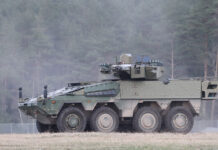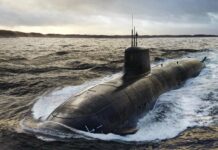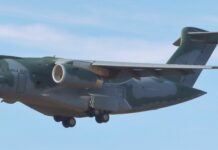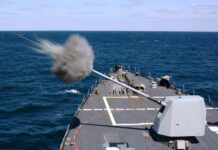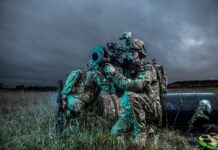LAND 400 is a multi-phase acquisition programme covering the selection of a Land Combat Vehicle System (LCVS), which will comprise various vehicles. Yet how has the programme held up amid shifting global defence priorities?
The Australian National Audit Office (ANAO) in a report entitled “Defence’s Procurement of Combat Reconnaissance Vehicles (LAND 400 Phase 2)” issued in November 2020 noted that the Australian Department of Defence (Defence) has described the LAND 400 programme as, “the biggest and most expensive acquisition in the Australian Army’s history.” In the report, the ANAO states that programme cost is likely to be between AUD 14 Bn (EUR 8.492 Bn) and AUD 20 Bn (EUR 12.132 Bn) for acquisition alone.
Looking back, according to the Australian Army User Requirement for LCVS in March 2011 stated: “The LCVS will be employed in close combat as part of the combined arms team in tactical tasks across the spectrum of conflict. The LCVS will be capable of integration with legacy and new equipment in order to contribute to the overall commanders’ situational awareness and combat power as part of a networked capability. The LCVS will be characterised by precision lethality, survivability, integration and sustainability to deliver a mobility system that enables an effective close combat capability.”
At this point the Australian Army was in the midst of a reorganisation under Plan Beersheba, with each of the three combat brigades being restructured. This would see each brigade with an Armoured Cavalry Regiment, equipped with M1A1 Abrams tanks, the 8×8 Australian Light Armoured Vehicle (ASLAV) and the M113. There were problems with the ASLAV and M113 fleets though, according to the User Requirement: “These fleets will reach technological and life of type ceilings and remain incapable of conducting successful close combat operations.” They also stated: “Developing threat capabilities cannot be defeated utilising current vehicle fleets.” In contrast, “the LCVS will enhance existing capability and remove current and future gaps in the close combat capability.”
Armour Foundations
The evolution of the Australian Army’s armour capability reflects how Australian procurement behaviour changed significantly in the 1960s and beyond. Prior to that, there was legacy equipment from World War II still in service and also Commonwealth equipment, such as the standard rifle, the L1A1 Self-Loading Rifle (SLR), the British and Commonwealth version of the FN FAL. The British Centurion Mk 3 was the Australian main battle tank, with some 146 vehicles delivered between 1953 and 1956. Armoured reconnaissance and liaison capability were provided by 265 Ferret vehicles ordered from Britain in 1955, and delivered in 1956 and 1957.
In 1958, Australia ordered 18 FV601 Saladin armoured cars, equipped with a 76 mm L5A1 gun and a 7.62 mm co-ax, which were delivered in 1960. These vehicles would be useful in both reconnaissance and counter-insurgency missions. The FV603 Saracen APC was ordered in 1958, with more than 20 delivered between 1959 and 1960. There was considerable commonality between these 6×6 vehicles, but they were not a success in Australian service. Ironically, it was the turret of the Saladin and its 76 mm L5A1 gun that would have a longer lifespan in Australian service than the parent vehicle. The Saracen would eventually be withdrawn from service when the Australian Army acquired a tracked APC.
The Australian Army developed a requirement for a tracked APC and decided to evaluate the M113A1 from the US and the FV432 from Britain to meet that requirement. Between November 1962 and April 1963, both vehicles were trialled in Australia and in the end, the M113A1 was selected as the best performing system. An order was then placed with the US and, between 1964 and 1979, some 840 units of M113AS1 vehicles were delivered. There were seven main variants acquired, the standard APC, ambulance, fitters’ vehicle, M577A1 command vehicle, M125A1 81 mm mortar carrier, M806A1 recovery vehicle and the M548 armoured logistic vehicle.
Combat experience in Vietnam led Australia to develop an indigenous M113 variant in the form of M113AS1 Fire Support Vehicle (FSV), which saw 15 vehicles converted with the addition of the turret from a Saladin armoured car. The concept obviously found favour in Australia as the FSV was replaced in service with a new M113AS1 variant in the form of the Medium Reconnaissance Vehicle (MRV). The MRV was fitted with the British Scorpion light tank turret mounting the L23A1 76 mm gun, with 48 vehicles converted to the MRV configuration.

Credit: Australian Army
By the end of the 1970s, the Australian Army started to consider a replacement for the M113 and in 1980 this led to Project Waler, the first serious Australian attempt to replace the M113. The aim was to acquire between 500 and 1,000 vehicles that would be optimised to operate in Australian conditions, with the selected vehicle spawning a number of different variants. The vehicles would all be built in Australia.
By mid-1982, three proposals were identified as having the ability to meet the requirements of Project Waler: one proposal was from Britain, one from France and one from FMC, the US manufacturers of the M113. The Australian Army was able to identify two proposals that met its requirements, and the aim was to move forward on a procurement process that would eventually lead to the selection of a winning candidate. Then reality began to set in. The cost of building vehicles that met Project Waler requirements in Australia started to escalate, and once some estimates had the programme costing in the AUD 1 Bn range, it became unaffordable and in 1985 was cancelled.
The first attempt to replace the M113 had failed. Instead, Australia would embark on a more cost effective solution. This was to be a service life extension and capabilities upgrade effort that would extend the M113 life of type out to 2010. Assuming that the demonstration phase of the programme went according to plan, the idea was that a total of some 537 vehicles would then be upgraded in a two-phase effort. This first upgrade effort would fail, and it was to take until 2002 until a programme known as LAND 106 was contracted to deliver an M113 upgrade programme that would deliver life of type out to 2025, by which time it would eventually be replaced by the winner of the LAND 400 Phase 3 programme.
In 2002, the M113 upgrade contract was signed with local company Tenix (later purchased by BAE Systems in June 2008). First deliveries of upgraded M113s took place in late 2007, but at this point, there were already concerns over the contract and over performance of the upgrade. Moving on to 2009, Defence concluded that they had no other option but to proceed with the M113 upgrade. Still, problems continued and by December 2010 the customer had accepted only 194 upgraded vehicles. The key point was that according to the original schedule, the programme should have been completed in December 2010.
A new programme schedule was then put into place, with the programme to be complete by November 2011. That date could not be met, and eventually the programme was completed in December 2012. A total of 431 M113s had been upgraded, 340 to the M113AS4 configuration and 91 to the M113AS3 configuration. Serious work had started on M113 upgrades in 1992 and yet it took until the end of 2012 to complete the programme. There were many lessons to be learnt in terms of contracts and programme management from the M113 upgrade. In contrast, the Australian acquisition of the ASLAV vehicle in the same era was much less fraught and far better managed, though far from perfect.
Wheeled Options
The beginning of the ASLAV era commenced in 1989 with the Wheeled Armoured Fighting Vehicle (WAFV) concept. The Australian Army wanted to trial this concept, so to that end they acquired 15 ex-US Marine Corps Light Armored Vehicles (LAV), which took part in trials in Northern Australia in 1990-91; the success of the trials led to the decision to acquire the LAV. Subsequently this would be classified as Phase 1 of the LAND 112 programme.
In August 1991, Phase 2 of the programme commenced which saw the acquisition of 97 ASLAV vehicles and supporting equipment. The prime contractor was the Canadian Commercial Corporation, a Canadian government entity that subcontracted the work to General Motors Canada (which later became part of General Dynamics). In 1995, this contract was increased to 111 ASLAV vehicles acquired to replace most of the ex-US vehicles acquired in Phase 1. These vehicles were delivered on schedule between 1995 and 1997.

Credit: Australian Army
The ASLAV vehicles acquired under Phase 2 can be grouped into three distinct variants. Firstly, there is ASLAV Type 1, which has as turret with a 25 mm cannon, also known as ASLAV-25. ASLAV Type 2 consists of APC, command, ambulance and surveillance variants. ASLAV Type 3 consists of two variants, fitters’ and recovery. In total, across the three phases of the ASLAV programme, Australia would end up with an operational fleet of 257 ASLAV vehicles.
In December 1997, Phase 3 of the programme was approved, covering the acquisition of up to 150 ASLAV vehicles. Due to a cost cap on the acquisition budget, it was only possible to acquire 144 vehicles. The Phase 3 vehicles were built to an ‘improved build standard’ and the acquisition contract included provision to upgrade existing Phase 2 vehicles to the Phase 3 build standard. Compared to LAND 106, the ASLAV acquisition/LAND 112 was a successful programme and delivered a very useful capability to the Australian Army. However, even as it was waiting for LAND 106 to finish, the Australian Army had already started work on a successor system to the M113AS3/AS4 and the ASLAV; this would become the LAND 400 programme.
LAND 400 – the Start
The Australian Army had started work on a successor armoured vehicle programme in the mid-2000s. They described the rationale for what they intended to achieve in a 2016 publication: “Army’s core business is the conduct of sustained close combat. Only Army conducts this task in the ADF on behalf of Government. LAND 400 delivers part of that capability and is replacing some of the capability we already have — ASLAV and M113AS4 — in accordance with good military practice.”
To meet those objectives, “LAND 400 will allow a staged retirement of the in-service Australian Light Armoured Vehicle (ASLAV) and the M113AS4 Armoured Personnel Carrier fleets in line with their technical Life of Type and reducing tactical utility in the contemporary operational environment that involves increasing levels of lethality and complexity.” The key initial task was stated as: “The highest priority for Army is to replace the ASLAV fleet with a CRV [Combat Reconnaissance Vehicle] due to obsolescence factors that constrain tactical employment and increase the cost of ownership. These obsolescence factors cannot be mitigated through upgrade and without replacement starting in 2020, a capability gap will result.”
As previously noted, LAND 400 was the most ambitious acquisition programme ever undertaken by the Australian Army. In the earliest phase of the programme in 2006, the Army issued a Request for Information (RFI) to industry, then in 2009 there was a review process where international programmes similar to LAND 400 were analysed and a further RFI was issued in 2010. There were other considerations beyond vehicle performance to accommodate, Australia would generate a Defence Industrial Capability Plan and, as a part of this, establishing a sovereign industrial capability would be a priority in LAND 400. Later on, this would be described as: “Broad Australian industry involvement in the delivery of the new Combat Reconnaissance Vehicle programme for example will ensure Australia develops the sovereign capability to maintain a lethal, relevant and effective capability into the future.” In addition, in order to de-risk the programme, contenders were most likely to be military off-the-shelf (MOTS) systems. LAND 400 was therefore a critical programme for the Army, but it was going to have a tremendous impact on the development and sustainment of a sovereign defence industrial capability in the land systems sector.
As a programme, LAND 400 was divided into four phases. Phase 1 was essentially the project definition with this work carried out prior to 2009. Phase 2 was the Mounted Combat Reconnaissance Capability, as in the ASLAV replacement. Phase 3 was the Mounted Close Combat Capability replacing the M113 and Phase 4 was the Integrated Training System. It was Phase 2 for the CRV as the ASLAV replacement that was the first major programme component to get underway.
LAND 400 Phase 2
December 2015 saw the release of a Request for Tender for Phase 2; bidders submitted both MOTS and MOTS Plus solutions, and in total, eight tenders were received. At this point, Australia believed that there were some 14 systems globally capable of meeting their CRV requirement with 12 of these evaluated followed by a tender process that led to eight proposals. By July 2016, two bidders had been shortlisted, these being Rheinmetall with the Boxer and BAE Systems with the AMV 35, a variant of the Patria AMV with the E35 turret of the CV9035 IFV.
The shortlisted bidders then participated in a year-long risk mitigation activity, another effort to de-risk the programme, as well as work to increase Australian industrial participation. This process was completed in August 2017 and from September 2017 to January 2018 came the final evaluation and selection of the winning proposal. The government was informed that the Rheinmetall proposal best met the needs of LAND 400 Phase 2 and in March 2018, Rheinmetall was nominated as the preferred supplier. Although it had initially been thought that 225 vehicles would be acquired to meet the CRV requirement, in the end only 211 were contracted for.
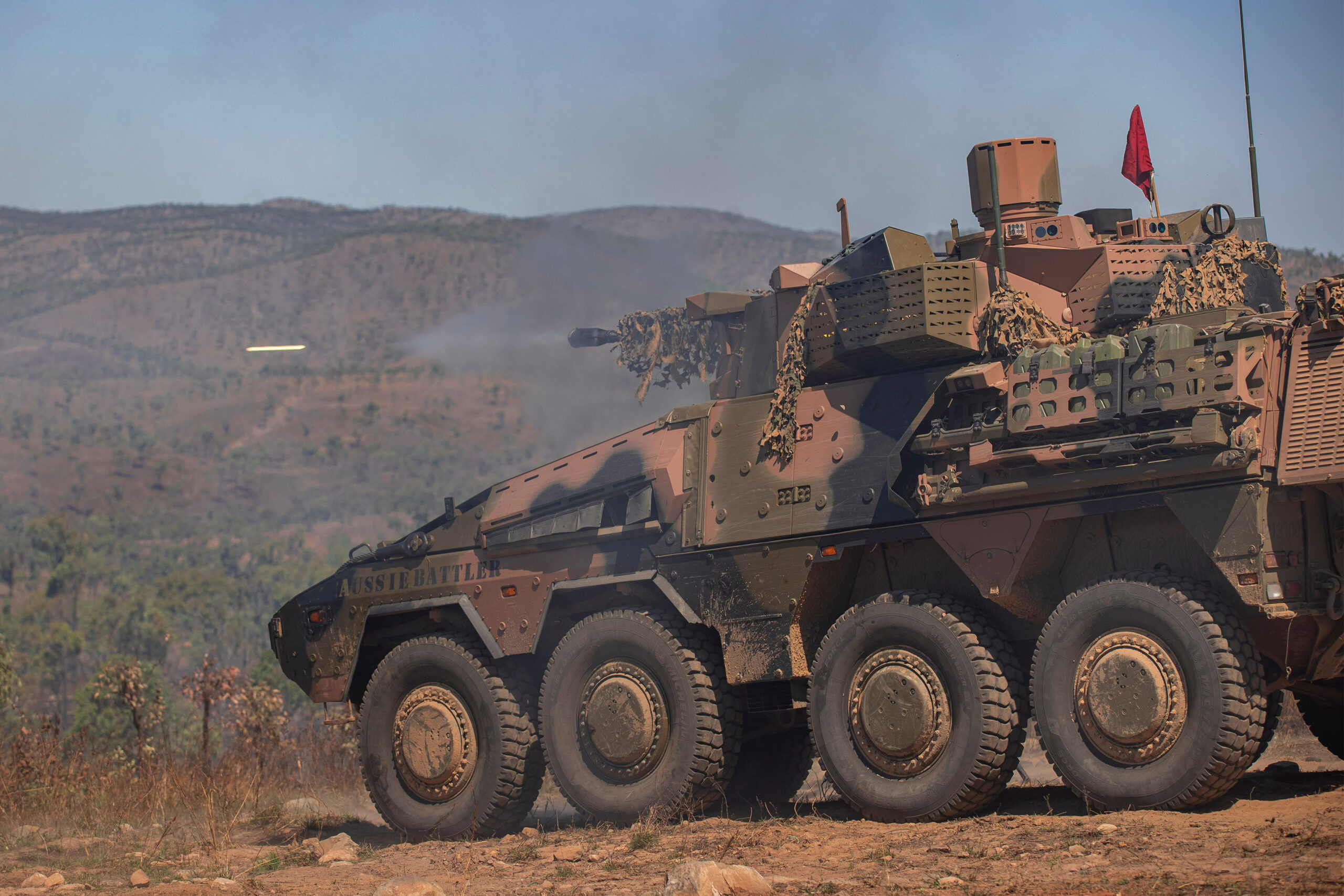
Credit: Australian Army
On 9 August 2018, Australia signed a contract with Rheinmetall valued at AUD 5.2 Bn (EUR 3.141 Bn) for 211 Boxers, 12 mission modules and associated support. A critical part of the Rheinmetall proposal for LAND 400 Phase 2 was the establishment of the Military Vehicle Centre of Excellence (MILVEHCOE) in Ipswich, Queensland, in partnership with the Queensland State Government.
The MILVEHCOE site houses the headquarters of Rheinmetall Defence Australia (RDA) and will be responsible for the delivery and sustainment of the 211 Boxer vehicles. In addition, it will manage the integration, support and upgrade of the large number of Rheinmetall HX trucks purchased by the Australian Army under the LAND 121 programme. Should RDA win LAND 400 Phase 3, the production and support of the IFV would be at MILVEHCOE.
As regards the mechanics of the Boxer programme, deliveries were to be in two tranches. The first 25 vehicles would come from Germany and be ‘finalised’ at MILVEHCOE to provide an early operational capability for the Army. These Block 1 vehicles consisted of 12 CRVs with the Lance turret and the 30 mm MK30-2 ABM cannon and 13 Multi-Purpose Vehicles. On 30 March, RDA announced that they had ‘struck the arc’ on the first weld of materials for Boxer vehicles being built at MILVEHCOE. The 186 Block 2 Boxers built in Australia comprise: 121 CRVs, 15 command vehicles, 29 joint fires surveillance (JFS) vehicles, 11 recovery vehicles and 10 repair vehicles. It is not just about RDA building the vehicles, it is important to note that they have created a whole ecosystem of local suppliers to support the build and sustainment programme.

Credit: Australian Army
As an Australian programme, LAND 400 Phase 2 is clearly very significant with the significance set to grow even more via an unexpected development. On 23 March, representatives of the Australian and German Governments signed a defence cooperation agreement in Canberra. This agreement would then allow for negotiations to commence on the acquisition of more than 100 Australian-built Boxer vehicles to meet the German Army schwerer Waffenträger Infanterie (sWaTrinf) vehicle requirement for an infantry direct tactical fire support platform. The sWaTrinf vehicle will be based on the Australian CRV with the Rheinmetall Lance turret and the 30 mm MK30-2 ABM cannon. Deliveries are scheduled to commence in 2025. Should all go according to plan, this German acquisition will be one of the largest defence export contracts ever achieved by Australia.
LAND 400 Phase 3
As previously stated, LAND 400 Phase 3 covers the acquisition of a mounted close combat capability for the Australian Army to replace the M113AS3/AS4 APC and variants with an IFV. The scope of the programme was fixed on the acquisition of up to 450 IFVs and variants and 17 Manoeuvre Support Vehicles (MSV), the latter being essentially a combat engineering variant. There was also a separate RFI for logistics vehicles, mortar carriers and mortar ammunition carriers related to the IFV acquisition.
Initially, there were four contenders for the Phase 3 programme: BAE Systems with the CV90 Mk 4; General Dynamics Land Systems (GDLS) with the Ajax, developed for the British Army; Hanwha Defence Australia (HDA) with the AS21 Redback; and RDA with the KF41 Lynx. After the earliest stages of the tender process, two bidders were shortlisted in September 2019 in the form of HDA with the Redback and RDA with the Lynx.
As with Phase 2, in LAND 400 Phase 3, local industrial involvement to produce and sustain the IFV is a key metric in the selection process. We have already discussed RDA and MILVEHCOE, but HDA has also established a manufacturing facility in Australia at Geelong in Victoria in connection with the LAND 8116 Protected Mobile Fires programme. Therefore both RDA and HDA had the potential to meet local build and sustain requirements.
Following Australia’s May 2022 elections and the arrival of a new government, in August 2022, Prime Minister Anthony Albanese and Defence Minister Richard Marles announced that there would be a Defence Strategic Review (DSR) which would look at the state of the Australian military, the threats it faces, and the equipment it needs. One side effect of the DSR process was that the LAND 400 Phase 3 acquisition was halted.
Following its publication in April 2023, the DSR called for major changes to multiple programmes, including Land 400 Phase 3. Even prior to the May 2022 election, the previous government had indicated that it would reduce the IFV buy from 450 down to 300 units, with the potential to subsequently increase the buy in increments of 50 units. Now the DSR has recommended that the Land 400 Phase 3 IFV purchase be cut further, stating: “Meeting the most demanding land combat tasks will require new infantry fighting vehicles. Our assessment is that the LAND 400 Phase 3 – Land Combat Vehicle System (Infantry Fighting Vehicle) acquisition must be reduced from 450 to 129 vehicles. This will provide one mechanised battalion in particular for littoral manoeuvre, including training, repair and attrition stock.”

Credit: Australian Army
A further blow came in the form of the DSR recommendation for LAND 8116 Phase 2, under which Australia was due to acquire 30 AS9 Huntsman self-propelled artillery systems and 15 AS10 Armoured Ammunition Resupply vehicles. However, the DSR stated: “Army must cancel LAND 8116 Phase 2 – Protected Mobile Fires (the second regiment of self-propelled howitzers). These systems do not provide the required range or lethality. The cancellation of this program, in addition to savings from the reduction of LAND 400 Phase 3, will help enable the acceleration and the acquisition of additional HIMARS and a land-based maritime strike capability.”
For the Australian Army, this will require a significant rethink on the organisation and equipment of its armoured/mechanised brigades. Clearly you are not going to replace over 500 M113AS3/AS4 vehicles with 129 new IFVs, no matter how capable they are! This would also seem to indicate that a number of M113s will have to remain in service beyond their 2025 time of life.
For both HDA and RDA, this change in the numbers of IFVs to be purchased under LAND 400 Phase 3 is obviously a major blow. Both companies will now have to rework their financial and industrial offers for the programme. The intention to build and sustain the IFV fleet locally will remain, but with a reduction in numbers of vehicles to be purchased by more than 71%, unit cost per vehicle will inevitably rise.
The Australian Government had already indicated that its ability to fund defence programmes was not ‘limitless’. Furthermore, LAND 400 Phase 3 was not the only defence programme to be reduced in scope or cancelled. That being said, by reducing the IFV purchase so drastically, the government puts the Australian Army in a difficult position. By continuing with the IFV purchase, even the DSR has accepted the fact that this is a legitimate requirement, as a reduced acquisition cannot meet this requirement and as the current M113 fleet is obsolete, what is the Australian Army supposed to do? Difficult times lie ahead.
David Saw



